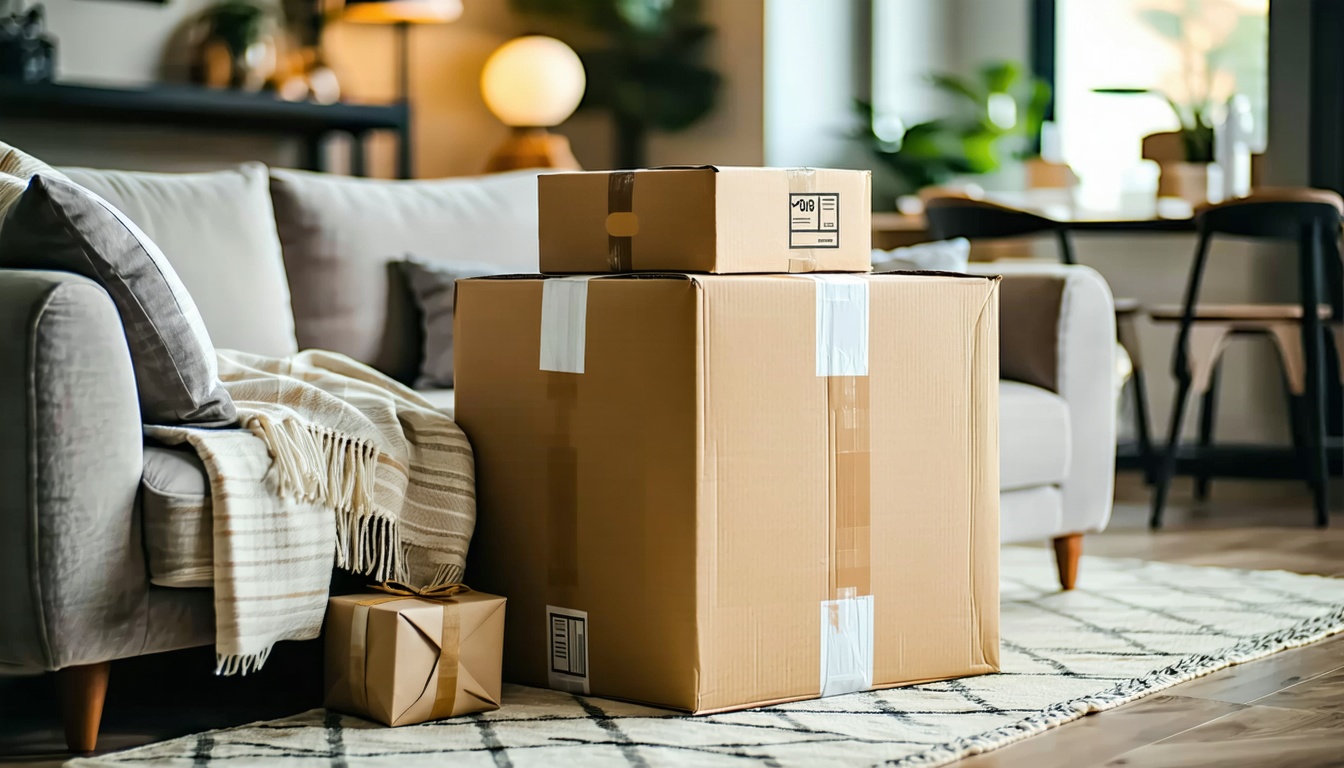Shipping Policies Overview
Understanding the intricacies of shipping policies is essential for furniture retailers operating in the e-commerce landscape of Canada. Shipping methods and costs not only affect operational efficiency but also have a significant impact on customer satisfaction and sales.
Understanding Shipping Methods
Retailers can choose from various shipping methods to accommodate their furniture delivery needs. The main methods include self-shipping, which involves retailers using their own resources for delivery, and third-party logistics, where external carriers handle shipping. Each method offers unique advantages and challenges.
For self-shipping, retailers gain full control over the fulfillment process, enhancing the customer experience with features like live tracking and paperless proof of delivery. In contrast, third-party logistics providers can offer established routing and handling expertise, which can be beneficial for managing nationwide delivery.
| Shipping Method | Description | Advantages |
|---|---|---|
| Self-Shipping | Retailers handle shipping using their own staff and vehicles | Full control, transparency, live tracking |
| Third-Party Logistics | External carriers manage shipment and delivery | Expertise, established routes, logistical support |
Impact of Shipping Costs
Shipping costs play a pivotal role in e-commerce furniture sales, often determining whether a customer completes a purchase. Offering free shipping is one effective strategy to mitigate shopping cart abandonment. However, it is important to recognize that shipping is not truly “free”—someone must bear the expense. A common practice is to establish a minimum order amount that triggers free shipping, allowing retailers to offset shipping expenses while encouraging larger purchases.
Furthermore, real-time carrier rates integration is becoming increasingly important for transparency and customer satisfaction. Platforms like Shopify provide the ability to offer live pricing from multiple carriers, such as Canada Post, enabling customers to select the service that best fits their needs. This approach ensures that customers are only paying for the shipping options they require.
| Shipping Strategy | Description | Benefits |
|---|---|---|
| Free Shipping | Offering no-cost delivery for orders above a certain threshold | Increases conversion rates, reduces cart abandonment |
| Real-Time Carrier Rates | Integration for live pricing based on customer location and chosen carrier | Allows precise pricing, enhances customer choice |
Understanding these shipping methods and their associated costs enables furniture retailers in Canada to create effective shipping policies that cater to customer expectations while ensuring operational success. Explore more about furniture shipping policies to further refine your approach.
Determining Shipping Strategies
Choosing the right shipping strategies is critical for the success of e-commerce furniture retailers in Canada. Understanding the differences between flat rate and table rate shipping, as well as per product versus time-sensitive shipping, can significantly impact logistics management and customer satisfaction.
Flat Rate vs. Table Rate Shipping
Flat rate shipping is a straightforward delivery method where a single rate is applied regardless of the shipping zone. The total cost is primarily based on the number of items being shipped. For example, carriers like UPS charge flat rates ranging from $9.45+ to $24.30+, depending on package size categories. This approach simplifies the shipping process and makes it easier for customers to understand shipping costs upfront.
| Shipping Method | Description | Cost Range |
|---|---|---|
| Flat Rate Shipping | Charges a single fee based on the number of items | $9.45+ to $24.30+ (based on size) |
| Table Rate Shipping | Allows different rates for similar packages based on various factors | Varies by distance, weight, and size |
Table rate shipping, on the other hand, offers flexibility by providing different shipping costs for similar items based on several factors, such as the shipping scenario. This method allows retailers to charge lower rates for local deliveries compared to interstate shipping, ensuring fair pricing. Retailers can set multiple rates that cater to varying customer needs based on distance, weight, and package dimensions. For guidance on establishing effective shipping policies, refer to our article on furniture shipping policies.
Per Product vs. Time-Sensitive Shipping
When determining shipping costs, per product shipping is a common strategy, especially for large items like single-piece furniture. This method considers various criteria such as product category and final destination, ensuring correct pricing for bulky orders that do not fit standard shipping boxes. Additional fees may apply to cover costs associated with oversized items, which can be crucial for transparent pricing.
| Shipping Method | Characteristics |
|---|---|
| Per Product Shipping | Charges based on product category and destination |
| Time-Sensitive Shipping | Costs determined by delivery urgency (e.g., same-day, overnight) |
In contrast, time-sensitive shipping encompasses expedited options like same-day delivery, overnight shipping, and priority mail. The charges for these services are directly linked to the urgency of delivery, appealing to customers who require quick service for urgent purchases. This approach can enhance customer satisfaction and increase sales, particularly during peak buying seasons. For pricing insights on delivery timelines, explore our article on furniture shipping timeframes.
Adopting the right shipping strategies not only helps manage logistics effectively but also meets the needs and expectations of customers. Each method has its advantages and potential challenges, necessitating careful consideration on the part of retailers to ensure a seamless delivery experience.
Managing Shipping Costs
Managing shipping costs effectively is crucial for e-commerce furniture retailers in Canada as they navigate the complexities of delivering large items while ensuring customer satisfaction. Here are two key strategies to consider: implementing free shipping options and integrating real-time carrier rates.
Free Shipping Strategies
Offering free shipping has proven to be one of the most effective ways to reduce shopping cart abandonment in e-commerce. Research shows that nearly 60% of shoppers would abandon their cart if shipping charges are perceived as too high. However, it’s important to note that shipping is seldom truly free—someone must cover the costs.
Retailers can consider implementing free shipping based on a minimum order amount as a strategy to offset costs. This not only encourages larger purchases but also makes shipping seem more manageable for customers. For example, setting a threshold of $200 for free shipping can motivate buyers to add extra items to their cart.
| Minimum Order Amount for Free Shipping | Estimated Customer Benefit |
|---|---|
| $100 | Impacts price sensitivity |
| $200 | Encourages larger purchases |
| $300 | Reduces shipping costs per item |
By leveraging this strategy, retailers can enhance customer satisfaction while effectively managing shipping fees.
Real-Time Carrier Rates Integration
Another invaluable approach to managing e-commerce furniture shipping fees is integrating real-time carrier rates into the checkout process. This gives customers accurate shipping costs based on their location, order weight, and dimensions, enabling them to understand the total expenses upfront.
Utilizing advanced algorithms and AI tools can further optimize shipping decisions. For instance, tools such as WareIQ’s Inventory LogIQ help retailers streamline their logistics processes by automating stock replenishment and optimizing inventory management. This not only reduces unnecessary costs but can also contribute to improved customer experience.
Retailers should consistently monitor and update their freight rates to remain competitive and avoid additional costs associated with outdated shipping information. Integrating these carrier rates can lead to better decision-making regarding courier selection and overall shipping strategies. To learn more about furniture shipping policies, check out our article on furniture shipping policies.
By applying these two strategies—offering free shipping under certain conditions and integrating real-time carrier rates—furniture retailers can make significant strides in managing their shipping costs effectively.
Logistics Solutions for Furniture Retail
Choosing the right logistics solutions is essential for e-commerce furniture sellers in Canada. Understanding options like LTL vs. FTL shipping and White Glove delivery services helps retailers optimize their shipping strategies and improve customer satisfaction.
LTL vs. FTL Shipping
When it comes to shipping furniture, retailers have two primary options: Less Than Truckload (LTL) and Full Truckload (FTL) shipping. Each has its own advantages depending on the size and volume of shipments.
| Shipping Type | Description | Cost-Effectiveness | Ideal For |
|---|---|---|---|
| LTL Shipping | Involves sharing truck space with other shipments. | Lower cost for smaller or less frequent orders. | Businesses sending smaller shipments that adapt to varying inventory levels. |
| FTL Shipping | Dedicates an entire truck to a single shipment. | More cost-effective for large volumes despite higher upfront costs. | Large furniture orders that can fill a truck, enhancing customer satisfaction with faster transit times. |
LTL shipping serves as a budget-friendly fulfillment alternative for businesses who require flexibility in shipping smaller items. It allows retailers to reach a broader range of customers. On the other hand, FTL shipping is ideal for large orders and expedites the delivery process by eliminating multiple stops along the route.
White Glove Delivery Services
White Glove delivery is a premium option that involves specialized services for transporting and handling delicate or bulky furniture items. This service typically includes careful delivery, unpacking, and assembly, ensuring the customer has a hassle-free experience.
| Service Features | Benefits |
|---|---|
| Professional handling and assembly | Increases customer satisfaction and reduces return rates |
| Carefully managed delivery process | Enhances brand reputation and potential for increased sales |
By offering White Glove delivery services, furniture retailers can differentiate themselves from competitors. This premium service helps build trust with customers, leading to repeat business and positive reviews.
Additionally, integrating White Glove services with effective shipping policies can optimize customer outreach and logistics management. Retailers should consider these factors when designing their furniture shipping policies to align with both customer expectations and operational capabilities.




